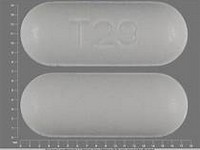Carbamazepine
CLINICAL USE
DOSE IN NORMAL RENAL FUNCTION
PHARMACOKINETICS
DOSE IN RENAL IMPAIRMENT
GFR (mL/MIN)
DOSE IN PATIENTS UNDERGOING RENAL REPLACEMENT THERAPIES
IMPORTANT DRUG INTERACTIONS
Potentially hazardous interactions with other drugs
ADMINISTRATION
Reconstition
–
Route
Oral, rectal
Rate of Administration
–
Comments
When switching a patient from tablets to liquid the same total dose may be used, but given in smaller more frequent doses125 mg suppository is equivalent to 100 mg of tablets
OTHER INFORMATION
micromol/L at steady state).
